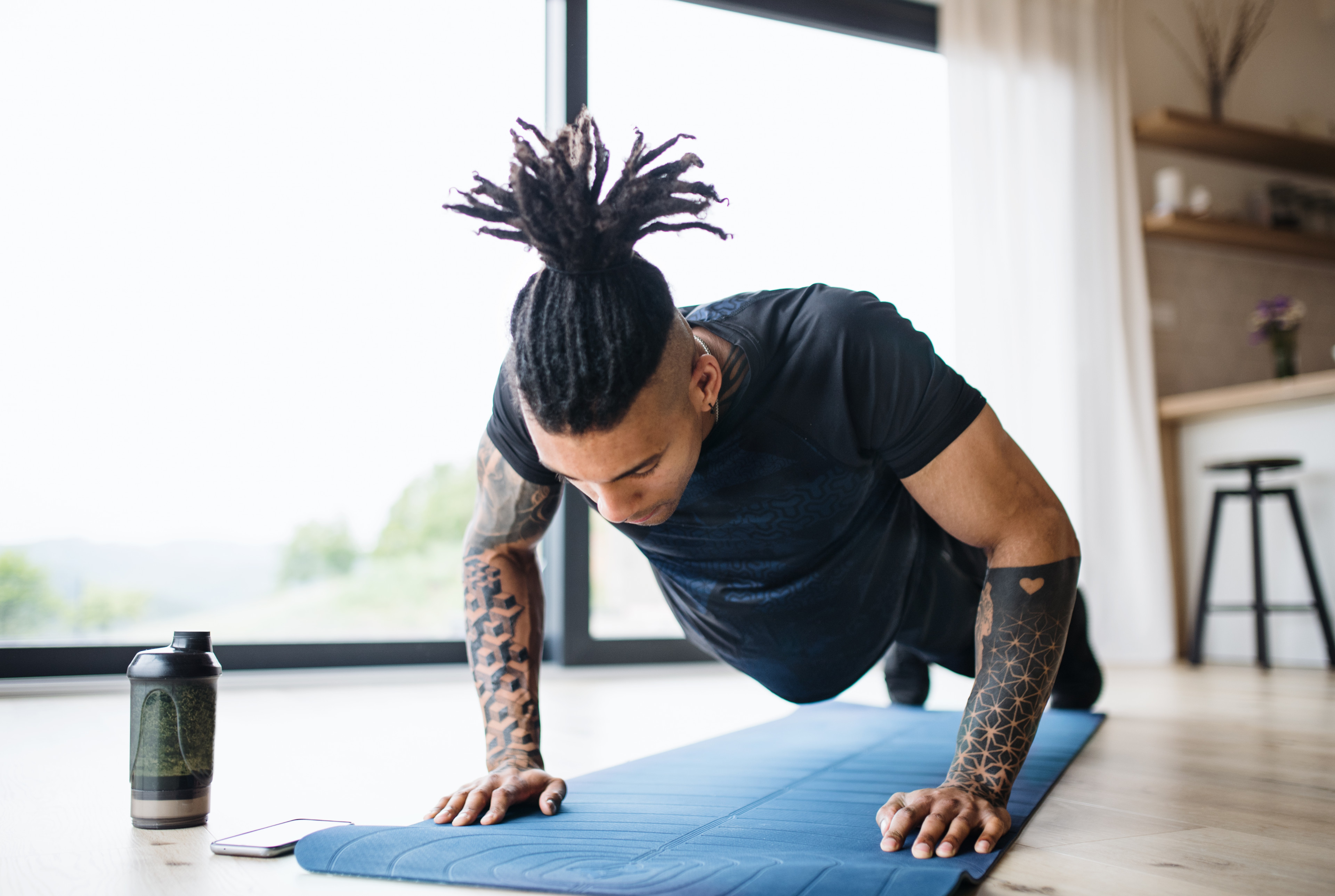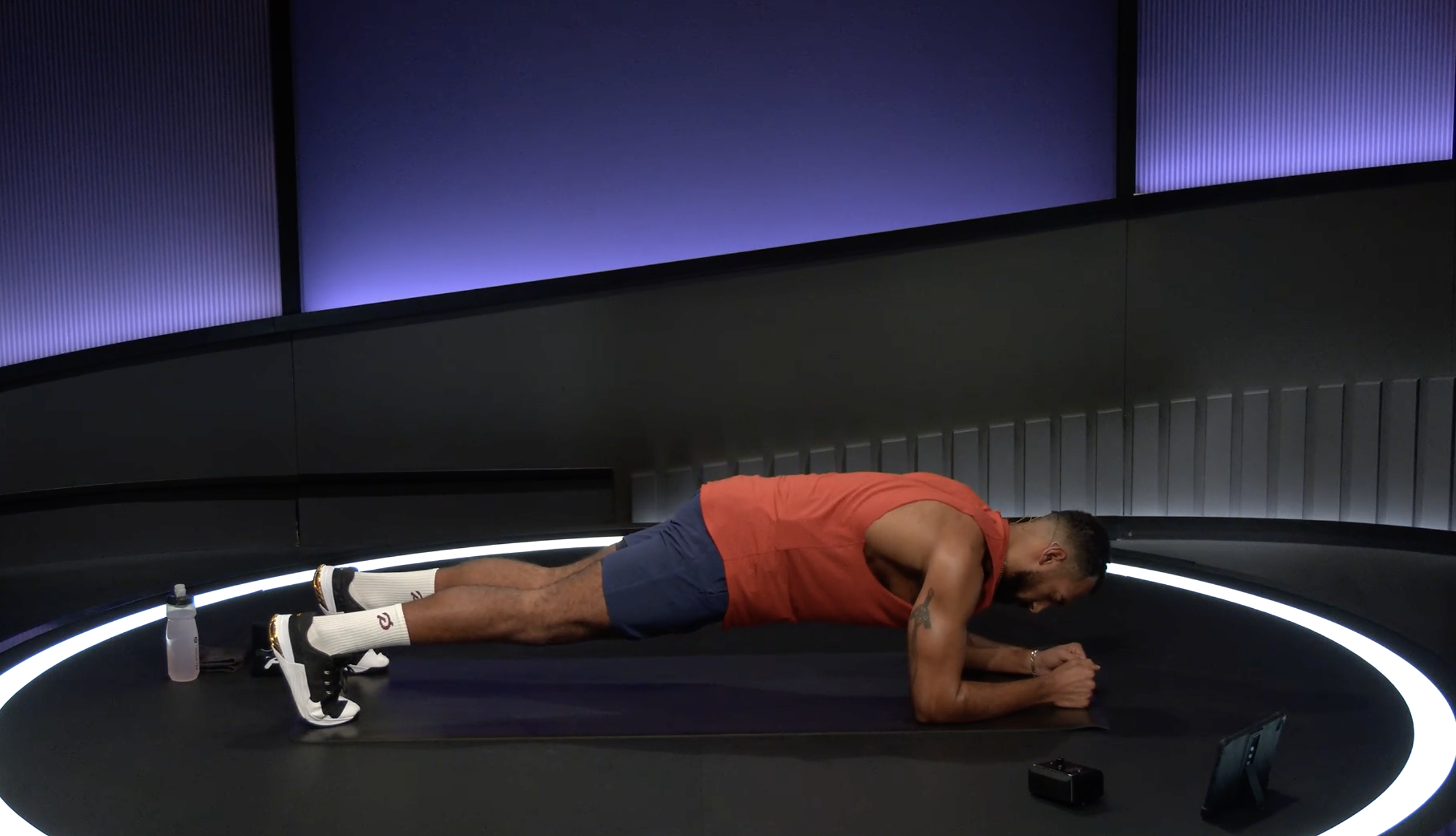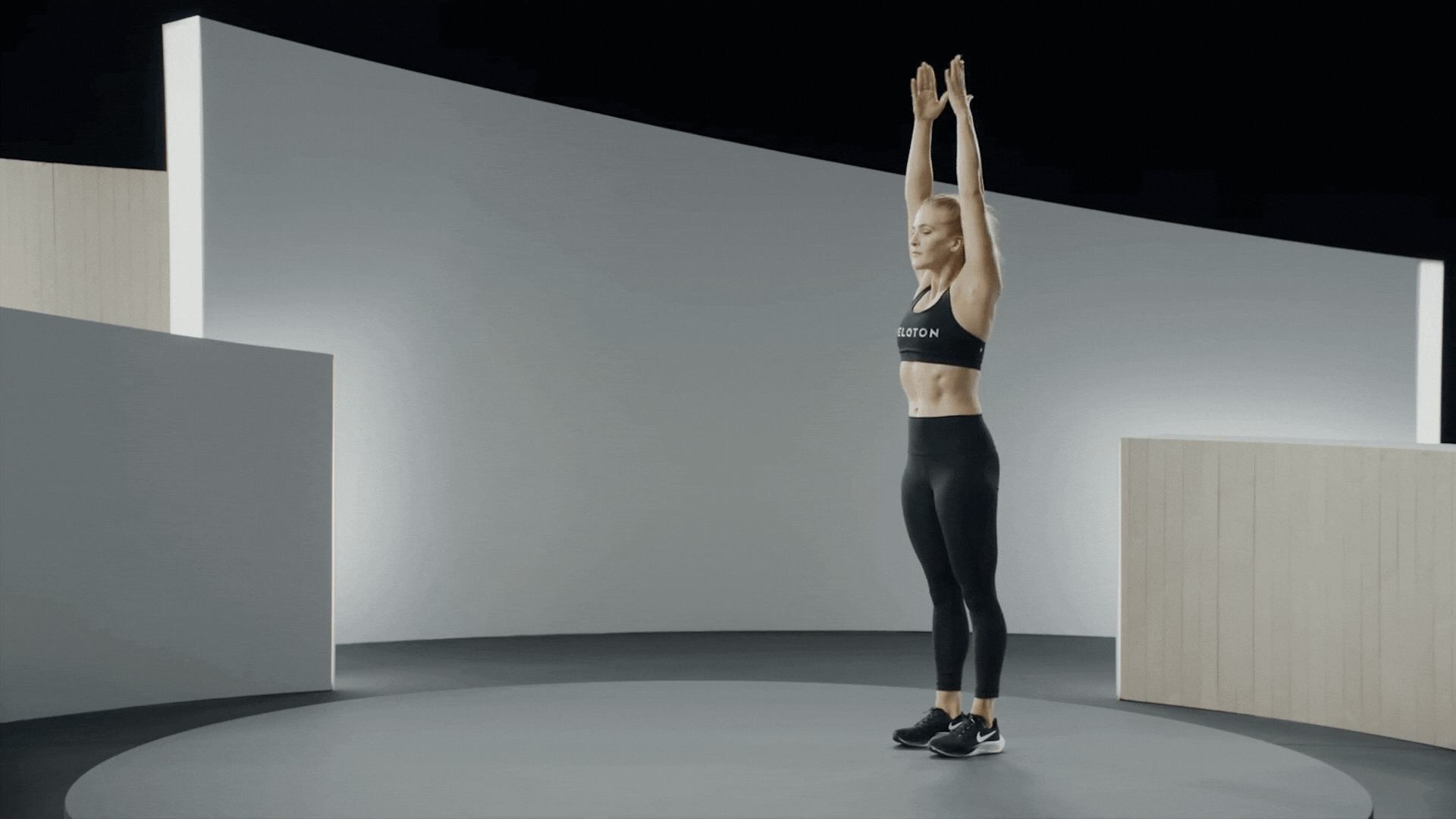
Halfpoint Images/Getty Images
Yes, You Can Work Your Biceps with No Weights. Here's How
Plus, experts dig into whether you can actually grow your muscles without any external resistance.
By Rozalynn S. Frazier•
Can Bodyweight Exercises Grow Your Biceps?
How to Strengthen Your Biceps Without Weights
6 Best Bodyweight Biceps Exercises
The Takeaway
Many of us have learned that only way to strengthen our biceps (aka the muscles in the front of our upper arms that help us rotate our forearms, bend our elbows, and raise our arms) is to put in time at the weight rack. But you can make plenty of upper body gains by doing bodyweight biceps exercises, especially if you’re a beginner.
To be clear: Bodyweight exercises don’t necessarily offer the same level of resistance as traditional weightlifting, but they still provide an opportunity to achieve your overall strength training and muscle-building goals if you do them correctly.
Can Bodyweight Exercises Grow Your Biceps?
The answer is a bit more complicated than a simple “yes” or “no.” Really, bodyweight biceps exercises’ effectiveness depends on your experience level and goals.
According to Michele Olson, PhD, senior clinical professor of sport science and physical education at Huntingdon College in Montgomery, Alabama, “Whole-body functional exercises such as bodyweight squats, lunges, push-ups, ab exercises, and triceps dips can be very effective without additional weight.” Take a push-up, for instance. “You’re virtually lifting up your body, which means you’re pressing the near equivalent of your body weight,” according to Olson.
Worthwhile as bodyweight exercises are, can they actually grow your biceps? In most (but not all) cases, the answer is no. According to Olson, “The type of bodyweight exercise you'd have to do to really challenge these muscles would be handstand push-ups.” Let’s face it: “Most of us are not going to be comfortable doing a handstand against a wall,” she says.
So if you’re looking to enter a bodybuilding competition, it’s probably a good idea to double back to the weight rack. However, if you’re just starting to strength train, trying out a new move, or focusing on your form, bodyweight biceps exercises are an excellent choice. “They’re great for getting to grips with your own body and can be used as flexibility training, strength training, and cardio training at the same time,” Peloton instructor Erik Jäger says.

Peloton App
Access thousands of classes with no equipment needed.
They can also help you prepare for weighted exercises. As you gain strength and master the different movement patterns, you can gradually add weight to avoid a fitness plateau. “Training only with your own body weight can be efficient but will lead to a relatively weak performance increase curve after a certain period of exertion,” Erik explains. “Weights give you the opportunity to use an external load to push your body to new heights of performance in an unfamiliar way. By using weights and the unfamiliar stimulus, you can build up muscles more easily.”
And the more comfortable you get with the moves, the more you can isolate certain muscles, improve your range of motion, and increase your weights for maximum gains, he adds.
How to Strengthen Your Biceps Without Weights
While putting together a routine with bodyweight biceps exercises, Erik says you should prioritize pulling movements (think: rowing or pull-ups) to get stronger. Just make sure to warm up your shoulders, elbows, and wrists before starting your workout.
As for how often you should do bodyweight biceps exercises, Erik explains that you can work your arm muscles, especially your biceps and triceps, more frequently than large muscle groups. like your chest or back. “It's great, especially as a beginner, to start with a four to six week program of bodyweight exercises to build up general fitness. If you're already advanced, it's great to focus only on body weight from time to time for two to three weeks to provide a new stimulus.” And if you want to train your arm muscles in isolation, Erik recommends doing bodyweight biceps exercises two to three times each week, regardless of how advanced you are.
Erik always prefers training with external resistance but says he loves finishing his workouts with a few bodyweight exercises. For example, he’ll do a set of push-ups after wrapping up a chest workout. “They're great for pushing your muscles to the limit,” he explains.
6 Best Bodyweight Biceps Exercises
Ready to do some bodyweight biceps exercises? Below, we outlined some of our go-to moves.

1. Plank
A full body exercise, plank pose requires you to hold your body weight steady. Looking for a modification? Bring your knees to the ground for additional support.
Start in a high plank position, with your hands beneath your shoulders and your legs stretched out behind you. Your toes should be on the ground.
Hold this position. Keep your spine in a neutral position, legs straight, shoulders away from your neck, and vision toward the front of the mat. It’s OK to keep a light bend in your arms.
Maintain steady breath as hold this position.
Muscles worked: Biceps, back, core, quads, shoulders

2. Inchworm
Building off plank pose, inchworm engages muscles throughout your body, and your biceps are one of them.
Start in a standing position with your feet shoulder-width distance apart.
Hinge forward at your hips, reaching your hands down to the mat and placing them six to 12 inches in front of your feet.
Walk your hands forward until you’re in a high plank position.
Pause in this position.
Walk your hands backward until they’re six to 12 inches in front of your feet.
Hinge at your hips to return to your standing position.
Muscles worked: Biceps, triceps, core, glutes, quads, calves, and chest
3. Pull-Up
According to Erik, pull-ups allow you to concentrate on the eccentric phase, which is when you’re lowering yourself down.
Stand directly beneath the pull-up bar.
Using an overhead grip, place your hands on the bar so they're shoulder-width distance apart.
Lift your feet off the ground. Brace your core. Engage your back and shoulders.
Pull yourself upwards until your chin is over the bar.
Slowly lower back down to the starting position.
Muscles worked: Biceps, lats, shoulders, and core

4. Push-Up
“The biceps are most active during the lowering phase of the push-up,” Olson says. “So, if you want to go full range, clear down to about an inch from the floor with each rep and keep your elbows in closer to your sides.”
Start in a high plank with your feet hip-width distance apart.
Keep your pelvis in a neutral position, your shoulders back and down, your thumbs close to your armpits, your elbows close to your sides, and your wrists stacked.
Keeping your body in one long line with a flat back, bend your arms and lower yourself until you’re about one inch off the floor.
Push back up to your starting position.
Muscles worked: Chest, shoulders, triceps, biceps, and core
5. Inverted Row
This move might look similar to a pull-up, but it has you pull horizontally rather than vertically.
Lie on your back with your chest directly under a bar.
Place your hands on a bar so they’re slightly wider than shoulder-width distance apart. Your palms should face forward.
With your core tight and your body straight, pull yourself up until your chest touches the bar.
Slowly lower back down.
Muscles worked: Back, lats, biceps, core, glutes, and hamstrings
6. Chin-Up
Chin-ups work muscles throughout your upper back. Just make sure your palms face toward you as you grab the bar.
Hang from a bar with your hands in an underhanded grip. They should be positioned shoulder-width distance apart.
With your core tight and your shoulders down and back, pull yourself up towards the bar until you’re at chest-level with your chin above the bar.
Slowly lower back down.
Muscles worked: Back, lats, shoulders, chest, biceps, and core
The Takeaway
Your biceps routine will likely vary based on your goals and experience level, but don’t discount bodyweight exercises. They give people, especially beginners, an opportunity to really focus on their form and technique. Starting weight-free also affords a chance to gradually progress to the next level. What’s more, using just your body weight reduces your risk for injury since you’re introducing less stress to your joints and muscles, making it harder to overload them.
“The goal of strength training and muscle building is always to become stronger than your body is designed to be,” Erik says. That requires some strategy. So as you advance, he recommends writing down the number of reps you do. And as you add weight, keep track of how heavy you’re lifting to track your progress. Remember: Always listen to your body and be smart when it comes to your workouts, whether you use weights or not.
This content is for informational and educational purposes only and does not constitute individualized advice. It is not intended to replace professional medical evaluation, diagnosis, or treatment. Seek the advice of your physician for questions you may have regarding your health or a medical condition. If you are having a medical emergency, call your physician or 911 immediately.
Read More
This content is for informational and educational purposes only and does not constitute individualized advice. It is not intended to replace professional medical evaluation, diagnosis, or treatment. Seek the advice of your physician for questions you may have regarding your health or a medical condition. If you are having a medical emergency, call your physician or 911 immediately.
Build full-body strength
Enter your email to get articles, instructor tips, and updates from Peloton sent to your inbox.
By providing your email address, you agree to receive marketing communications from Peloton.
For more about how we use your information, see our Privacy Policy.











